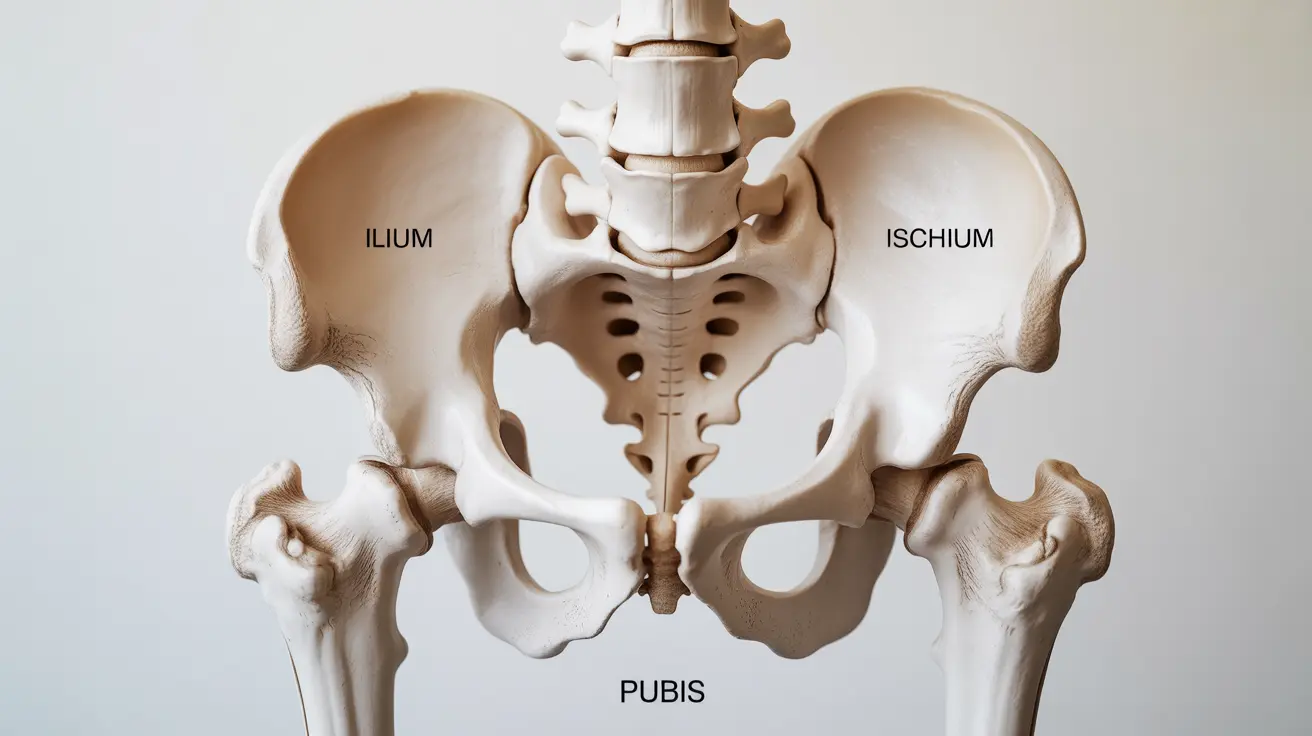The female pelvic bone plays a crucial role in the human body, serving as both a protective framework for vital organs and a specialized structure designed to support pregnancy and childbirth. This remarkable anatomical feature exhibits distinct characteristics that set it apart from its male counterpart, making it uniquely suited for reproductive functions.
Understanding the female pelvic bone's structure and function is essential for healthcare providers, expectant mothers, and anyone interested in women's health. Let's explore its complex anatomy, various shapes, and vital roles in the female body.
Anatomical Structure of the Female Pelvic Bone
The female pelvic bone consists of three main components that form the pelvic girdle:
- The ilium (two hip bones)
- The ischium (sitting bones)
- The pubis (anterior pelvic bones)
These bones join together to create a bowl-shaped structure that's wider and more circular than the male pelvis. This distinctive shape is crucial for accommodating pregnancy and facilitating childbirth.
Female vs. Male Pelvic Differences
Several key features distinguish the female pelvic bone from its male counterpart:
- Wider pelvic inlet and outlet
- More circular and spacious pelvic cavity
- Greater distance between the ischial spines
- Lighter and thinner bone structure
- More pronounced pubic arch angle
Role in Pregnancy and Childbirth
The female pelvic bone's design is specifically adapted to support pregnancy and facilitate childbirth. During pregnancy, hormones like relaxin help loosen the pelvic ligaments, allowing for increased flexibility during delivery. The wider pelvic outlet provides the necessary space for a baby to pass through during childbirth.
Protective Functions
Beyond its reproductive role, the female pelvic bone serves as a protective structure for various vital organs:
- Reproductive organs (uterus, ovaries)
- Urinary system components
- Lower digestive tract
- Major blood vessels and nerves
- Pelvic floor muscles
Types of Female Pelvic Shapes
There are four main classifications of female pelvic shapes, each with different implications for childbirth:
Gynecoid Pelvis
The most common and ideal shape for childbirth, featuring a round inlet and spacious cavity.
Android Pelvis
A more heart-shaped inlet, similar to male pelvis characteristics, which may present more challenges during delivery.
Anthropoid Pelvis
An oval-shaped inlet with a longer anterior-posterior diameter.
Platypelloid Pelvis
A flat, wide shape that may require special consideration during childbirth.
Frequently Asked Questions
What are the main differences between the female and male pelvic bones?
The female pelvic bone is wider, more circular, and has a larger outlet compared to male pelvic bones. It features a broader pubic arch, greater distance between the ischial spines, and generally lighter bone structure to accommodate childbirth.
How does the structure of the female pelvis support pregnancy and childbirth?
The female pelvis has a wider inlet and outlet, more circular cavity, and flexible ligaments that can stretch during delivery. These features create adequate space for a baby to pass through during childbirth while providing stable support throughout pregnancy.
What bones make up the female pelvic girdle and what are their functions?
The female pelvic girdle consists of the ilium (hip bones), ischium (sitting bones), and pubis (anterior bones). Together, these bones form a stable yet flexible structure that supports weight-bearing activities while protecting internal organs and facilitating childbirth.
What organs are protected by the female pelvic bone?
The female pelvic bone protects reproductive organs (uterus, ovaries), parts of the urinary system, the lower digestive tract, major blood vessels, nerves, and pelvic floor muscles.
What are the common shapes of the female pelvis, and how do they affect childbirth?
The four main pelvic shapes are gynecoid (ideal for childbirth), android (more challenging for delivery), anthropoid (oval-shaped), and platypelloid (flat and wide). These different shapes can influence the ease of vaginal delivery and may affect childbirth planning.




